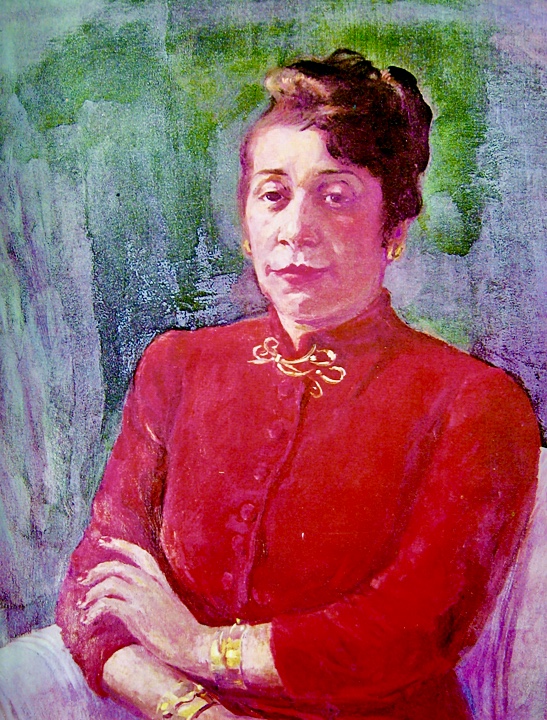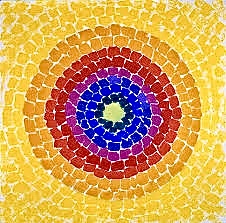Celebrating the Visionary and Rule-Breaking Art of Alma Thomas
Coloring Outside the Lines

Alexandria, VA – September 22 officially became Alma Thomas Day in D.C. The DC-educated (Howard) and D.C. educator, having taught art for 38 years in D.C. public schools, the “expressionist impressionist” African American artist of the Washington Color Field School would have been 130 last month. A street mural was created in her honor at the new 15th and Church Streets, NW curb extension, a few doors from the house where she lived.
For the occasion, the Smithsonian American Art Museum (SAAM) and other cultural and educational institutions across D.C. are honoring this groundbreaking artist, considered one of the most influential artists of the 20th century in America and worldwide with various events and programs. The SAAM, feting Thomas’s legacy and iconic colorful patterned abstractions, created a comic series, Drawn to Art: Ten Tales of Inspiring Women Artists.
Alma Woodsey Thomas was born on September 22, 1891, in Columbus, Georgia. At 15, her family moved to Washington, D.C. She graduated from Howard University in 1924 with the first degree granted by the newly created art department. Ten years later, she earned a Master of Arts degree in education from Columbia University Teacher’s College. Thomas died in D.C. in 1978, a dedicated and beloved educator and a celebrated African American female artist of international acclaim.

Alma Thomas only began to paint seriously after she retired in 1960. Thomas studied with Jacob Kainen at American University in the 1950s and was soon embraced by prominent first-generation Color School contemporaries such as Morris Louis, Gene Davis, Kenneth Noland as a bona fide member of the Washington Color Field School. Fellow second-generation Color School giant Sam Gilliam, also African American, is a prolific artist continuing to work to this day, experimenting with computer-generated images, incorporating them into his fluid, organic iridescent colors emblazoned on fabric, paper, wood, even plastic and metal mediums.
Despite the obstacles faced by being a Black woman in the 20th-century White male-dominated art scene, Thomas didn’t focus on racist and sexist oppression themes. Nature was her most compelling muse. She believed that nature, as well as art, was both gender and color blind. In describing the inspiration for one of her most recognizable works, The Eclipse, Thomas writes, “Still fresh in my memory are the beautiful flower gardens that we had. There were two unusually circular flower beds, so deeply preserved in my subconscious, which find expression in my paintings.”

This time of year, color abounds all around. Something as simple as light and shadow in a game of hide-and-seek, playfully filtering sunshine about the leaves of a lone tree, beg even the most task-oriented to imagine. “I looked at the tree in the window, and that became my inspiration. I noticed how this light shone on and through other trees, shrubs, and flowers, and I tried to capture this magic.” ~ Alma W. Thomas
Sometimes a cigar is just a cigar. In the imagination and hand of an artist, even a cigar can fly! Be sure to take some time to explore the world around you. Capture a sunset, a tree in autumn splendor, perhaps an everyday mundane object in a photo or a sketch. Then transform it in some new way. Try to capture the magic.
ICYMI: Alexandria City High School Holds Mock Election for Students




